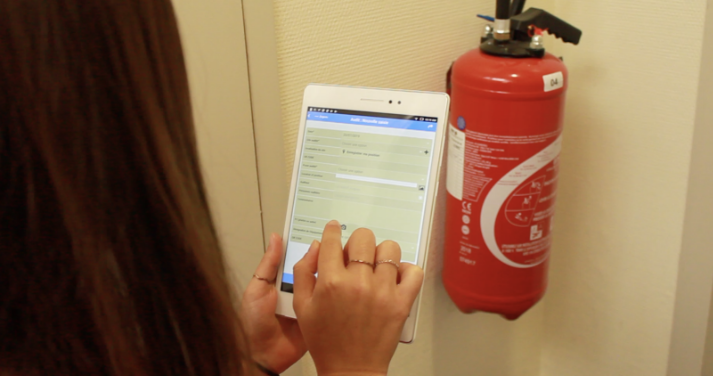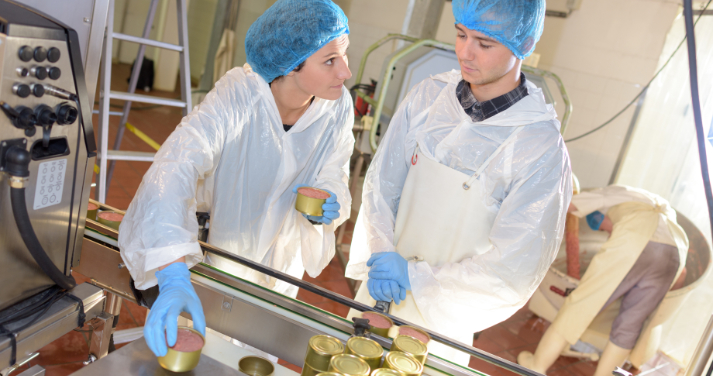How can Good Hygiene Practices benefit from the 5M method tool?
.png?width=735&name=unnamed%20(37).png)
All companies in the world, regardless of their activity, seek excellence in quality. High-quality standards will ensure great customer satisfaction and guarantee a great competitive advantage in the market. Achieving the best quality services/products necessitates the best hygiene practices, especially in the food and hospitality industry.
How to ensure the best quality via hygiene practices? How the 5M method can help?
The World Health Organization (WHO) reports that around 600 million people around the world get food poisoning every year, and 420 000 die of this contamination. Food poisonings can have a great negative impact on the company’s economy and its brand image. This is why Food Safety is very important to guarantee consumers' safety and prevent unfortunate events. This is why companies in the food industry rely on the “Good Hygiene Practices” tool and the HACCP principles and guidelines.
Good Hygiene Practices and risk control
Food business operators need to fully understand the risks and hazards related to their activity (biological, chemical and physical). In addition to the transportation of the products, storage, selling and the whole process of the food production itself. Good Hygiene Practices come to ensure that all hazards are well controlled in the food production process (from the raw material to the final product).
Moreover, in 1963 the Codex Alimentarius was published under the supervision of the World Health Organization and the Food and Agriculture Organisation (FAO), which includes international standards, practices (among which Good Hygiene Practices), guidelines and multiple recommendations concerning food safety at all the stages of the food production chain. The Codex proposes the implementation of Good Hygiene Practices in 8 stages:
- Primary production
- Equipment design and facilities layout
- Training, competence and skills
- Maintenance, cleaning and disinfection
- Personal hygiene
- Operation’s control
- Product information
- Transportation
The Codex allowed international food trade organizations to transport their products all over the world, but they must comply with the Codex requirements. However, in Europe and after multiple food-related incidents in the 1990s, the General Food Law was established under Regulation (EC) No 178/2002 “laying down the general principles and requirements for food law, establishing the European Food Safety Authority (EFSA) and the procedures in matters of food safety”. It paved the way for the Rapid Alert System for Food and Feed (RASFF), which along with the General Food Law add more restrictions to the Codex requirements, regarding food products international trading within the EU and from outside the member states. In addition to the General Food Law regulation, in 2004 the European Commission added a new regulation regarding the hygiene of foodstuffs, Regulation (EC) No 852/2004. It lays down all the guidelines and requirements related to food hygiene and it applies to all stages of food production, processing and distribution.
Finally, Good Hygiene Practices are basic requirements for every company seeking an advanced control system through the Hazard Analysis and Critical Control Points (HACCP). By applying the HACCP plan, many risks and hazards are controlled and monitored, in addition to thorough follow-up on all the critical points in the production processes.
Discover the Top 3 - Best Apps for Food Industry 2022
The 5M Method in food safety
What is the approach of the 5M method?
The 5M method, which is also known as the Ishikawa Diagram, is a management tool that aims to analyse the factors/causes of a known problem.
The 5M stands for: Machine (equipment) ; Medium (environment); Method (process) ; Material (raw materials) ; Workforce.
With the 5M, you can create a diagram helping you to identify the causes of the problem. Once you have identified all the necessary factors, you can generate an action plan to launch the corrective and necessary actions.
Good Hygiene Practices, and more generally Food Safety, can completely rely on this quality management tool to identify all the potential contamination sources.
Machine (equipment)
All materials used for the whole process of food production must meet Food Safety requirements. The equipment must be used under the manufacturer’s instructions. All scheduled maintenance and periodic inspections must be regularly performed to guarantee their best performance and to prevent any malfunctions. For example, coolers and heating systems must be well monitored and all the maintenance procedures should be up to date to make sure that the temperature is always appropriate for the adopted processes.
All the equipment should be installed properly and safely to guarantee the safety of the employees and production processes. However, they should be easily accessible to perform the cleaning, disinfection and maintenance. It is important to comply with all the Food Safety requirements to prevent any intoxication and food poisoning.
Medium (environment)
The working environment and conditions are very important to guarantee optimal and best hygiene conditions. There are different factors to take into account. Indoor and outdoor environments, temperature, humidity, air quality and the facility’s installation are all among the factors and many others to monitor, clean and disinfect to prevent any contamination in the food chain production. It would be interesting to use connected objects to monitor the temperature, humidity and all the physicochemical factors of the facility. Changing rooms for the personnel should never be neglected and the proper equipment should be provided to all the workers to also guarantee their personal hygiene.
To keep an optimal clean environment a Sanitary Control plan should be implemented and monitored to prevent any anomalies in the production process.
Method (process)
Method refers to all the procedures and processes in the stages of production. Actions related to hygiene are also included in these processes. Protocols for raw materials receiving and storage, temperature control, waste management, pest control management, cleaning, maintenance and many other actions are all detailed in these processes. It is also important to keep track of all these actions and carefully monitor them to guarantee their compliance with the predetermined requirements.
Any cleaning process, whether it consists of the hands, work environment or equipment, must comply with the TACT (Temperature, Actions, Concentrations, Time). These criteria correspond to the optimal use of a cleaning product:
- Temperature: corresponds to the optimal cleaning temperature. For disinfection processes, it is recommended to clean the equipment at 80°C.
- Action: the cleaning procedures, the tools and products to be used.
- Concentration: indicates the amount of the product to be used.
- Time: the contact time/duration of the cleaning to ensure the elimination of microorganisms. In other words the duration for the product to be effective.
Waste management is very important and should be carefully carried out. The waste flow should never interfere with the food chain production, from receiving the raw materials to the finished products.
Storage, transport and distribution should comply with many conditions to preserve the food quality and prevent any contamination. Humidity and temperature should be continuously monitored. The products should never be stored on the ground, they should be protected from any environmental infection.
Identification and traceability are necessary for any material (final products, raw materials, waste). Everything must be identified (including the composition) and traced from the industrial site to the market.
Discover the Top 3 - Best Apps for Food Industry 2022
Material (raw materials)
The control of all the materials is important to ensure the best quality and prevent contamination. Raw materials are not necessarily produced within the factory, so it is essential to monitor them, from their source until they arrive at the facility. Even finished products should be carefully monitored too. A lot of data is required to ensure optimal traceability: technical data sheets, specifications or food production certifications and food packaging certificates.
Sometimes, many processes involve water as raw material in the production process. Therefore, the physicochemical parameters must be carefully monitored and maintained to the desired level according to the production process.
Workforce
It is important to engage the workers in all the processes and make them responsible for all the hygiene protocols and for maintaining high-quality standards throughout the production chain. To do so, it is necessary to organise a training program related to all the prevention protocols. This is important not only for their safety but also for the safety and health of the consumers. In addition, the employer must provide all the necessary protective equipment for the workers and implement with the help of the EHS department all the necessary protective measures.
Good Hygiene Practices are essential not only for the “cleaning” but it is greatly related to all stages of the food production chain. This is why there is no room for error. The Ishikawa Diagram (5M method) is one of the tools that can be used to monitor and detect any deviations from the Good Hygiene Practices specifically and the Food Safety requirements globally. Many international standards can help you and get you certified, to guarantee high-quality products and the best food safety management, such as ISO 22000.
Ensure the best hygiene practices and compliance effortlessly with our user-friendly HACCP plan management app.
Label(s) : quality, 5M, Good hygiene practices, GHP, product protection, process
















No comment